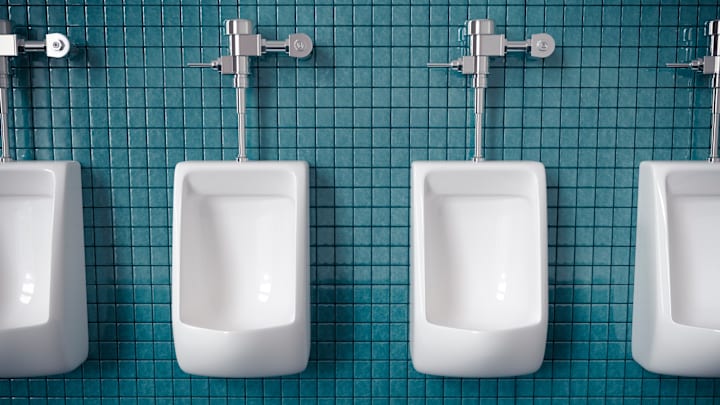If you’ve got a sweet tooth, your ears likely perk up whenever the word “cake” pops up in everyday conversation. But if the cake in question happens to be a urinal cake, that’s one conversation you—and your stomach—might want to sit out.
Urinal cakes, more formally known as urinal deodorizer blocks, most definitely do not look delicious. As for taste? While we cannot answer that question with any firsthand authority, we can venture a pretty good guess as to why no one’s eating them. But why do urinals need these fancy accessories when other bathroom fixtures, like toilets, do not?
If the technical name didn’t give their purpose away, urinal deodorizer blocks are designed to offset the persistent scent of pee that otherwise permeates public restrooms (which have enough odor problems, thank you very much). Ultimately, it’s pretty simple: Urinals tend to collect a lot of pee, and not all of it washes down the drain. All that residual urine can kick up quite a stink, which is where the cakes come in.
Thanks to the curious folks at SciShow, we now have a scientific breakdown of what exactly happens when urine sits around and why it becomes smelly. Urinal cakes, which were traditionally made of naphthalene and are now typically made with paradichlorobenzene—both of them chemicals used to make mothballs—are designed to overpower and soak up the smells produced by all that urine that doesn’t end up down the drain. Unfortunately, those chemicals might be carcinogenic, so while it’s absolutely fine to pee on them, please don’t slice yourself a delicious piece of urinal cake.
Have you got a Big Question you'd like us to answer? If so, let us know by emailing us at bigquestions@mentalfloss.com.
A version of this story ran in 2016; it has been updated for 2023.
